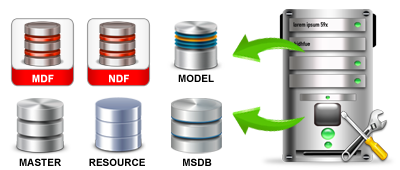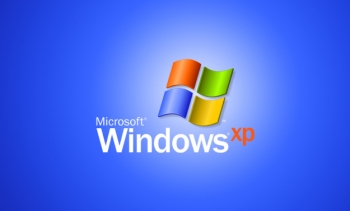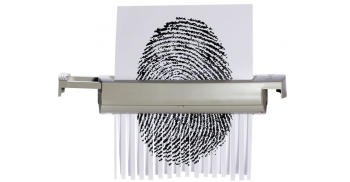- Home
- About Us
- Recovery Services Individual RecoveryEnterprise RecoveryAdditional Recovery
- Software
- Testimonials
- Locations
Should we rely on free anti-virus software?
Many users take full advantage of the free downloads available but is it enough and should we be doing more?
Is free anti-virus software enough?
Anti-virus and spyware software may not protect you from all malware, especially Trojans. Users are well aware of the dangers posed by malicious infections and wrongly assume that any anti-virus will keep them protected. Many rely on free downloads and never bother to update their protection, wrongly assuming that they are safe. It is not widely known that many anti-virus systems do not protect against Trojan horses.
Quite simply, anti-virus software protects against viruses. Obviously really! Anti-virus matches the digital signatures of known viruses with a signature database. Authors of malware are constantly exploiting new code to avoid anti-virus software. Therefore, can you be certain that your anti-virus is dealing with all potential threats?
Who Just Paid Microsoft Millions of Dollars for Continued Windows XP Support?
Windows XP has long been an OS Microsoft begrudgingly kept alive far longer than it could have ever imagined. Initially released in 2001, official support for Windows XP persisted all the way through April 2014. At the time, Microsoft noted that after 13 years of support, it was time for the company to look forward, unencumbered by outdated software.
But Microsoft is more than willing to make an exception if you’re willing to pony up some big bucks. Case in point: The US Navy’s Space and Naval Warfare Systems Command recently agreed to pay Microsoft $9 million in exchange for ongoing support of its Windows XP systems. The contract, recently signed in early June, also contains a number of options, which if exercised, “would bring the cumulative value” of the contract to nearly $31 million.
According to the US Navy, they have approximately 100,000 workstations still in use running legacy Windows XP applications. “Support for this software can no longer be obtained under existing agreements with Microsoft because the software has reached the end of maintenance period,” Navy officials explained. In addition to support for Windows XP, the contract also calls for ongoing support for Microsoft Office 2003, Exchange 2003, and Server 2003.
Secure Data Destruction: Why It Matters
It can be hard to comprehend the scale of the average company’s data footprint. Not only do firms today have local hard drives and tape backups to contend with, but also mobile devices, memory cards and even virtual environments provided through the cloud. Every bit of that data needs to be managed securely and compliantly – not just in storage and transit, but also at the end of its lifecycle.
Everyone ought to understand the importance of erasing data. If you’re selling a smartphone on eBay, the chances are you’ll want to make sure the buyer, regardless of intent, can’t dig up your old photographs and text messages. Similarly, most companies have legal obligations to destroy any sensitive information they’re no longer using.
Nonetheless, some consumers and businesses exhibit a surprising degree of negligence in this respect. According to a 2012 study from the Information Commissioner’s Office (ICO), the UK regulator responsible for enforcing the Data Protection Act, as many as one in ten second-hand hard drives sold online contain personal information. In the same year, the ICO fined one NHS trust £325,000 for selling old hardware on eBay that still held confidential records on thousands of patients and staff members.
Note that when the Data Protection Act is swapped for the more stringent EU General Data Protection Regulation next year, fines for equivalent acts of non-compliance will skyrocket – the new rules stipulate penalties of up to five per cent of a company’s annual turnover, or €100,000,000 (£80,000,000).
What makes data destruction secure?
As the above cautionary tale demonstrates, not taking pains to permanently erase data can lead to catastrophe. In an age of increasingly smart, interconnected technology, it bears remembering that every byte of electronic information exists in physical form – no matter what it looks like on screen, there’s a hard drive platter or memory chip somewhere that’s ripe for the taking.
So, businesses – and privacy-conscious consumers – need to keep track of data assets that have come to the end of their lifecycle, and then destroy them at their origin. This might not sound like too complex a job – even someone with rudimentary knowledge of technology might be familiar, in theory if not in practice, with concepts like a disk format or factory reset. Failing that, it might still occur to them to toss an old laptop into a skip rather than risk its unauthorised reuse.
Unfortunately, secure data destruction isn’t actually that simple. None of the above methods guarantee that the information stored on those devices won’t be recoverable – in fact, it might take little more than a few minutes with a free software package to retrieve it.
NetVault Backup Plug-in for VMware 10.0.5 – User Guide
Recovering a virtual machine from the restored files
After restoring the virtual machine disk and configuration files, you can use the VMware vCenter Converter Standalone Client to create a virtual machine using the restored “.vmx” and “.vmdk” files. After a VADP Recovery, you must modify the “.vmx” file so that it matches the disk paths of the restored “.vmdk” files. For more information, see the relevant VMware vCenter Converter Standalone Client documentation.
Recovering a virtual machine from a VCB backup
To restore the virtual machine files to the destination VMware Server, start the VMware vCenter Converter Standalone Client Wizard. Follow the instructions to complete the virtual machine recovery. When the prompt “Select source type”strong> prompt appears, select the option “Backup image or third-party virtual machine.” Additionally, set the “Virtual machine file” option to the restored “.vmx” file.
To change the datastore path
- Navigate to the target directory to which the virtual machine files were restored and note the filenames of the virtual disks.
The following example shows some files generated from Virtual Machine Files Only Restore of a VADP backup;
MyVirtualMachine.vmx
scsi0-0-MyVirtualMachine.vmdk
scsi0-0-MyVirtualMachine-s001.vmdk
VirtualMachineConfigInfo - Open the “.vmx” file.
- Modify the relevant entries for the virtual disk(s). For example, modify the following entry:
- After modifying the “.vmx” file, start the VMware vCenter Converter Standalone Client Wizard to create the virtual machine. Follow the instructions to complete the virtual machine recovery. When the “Select source type” prompt appears, select “VMware Workstation or other VMware virtual machine.” Additionally, set the “Virtual machine file” option to the restored “.vmx” file.
scsi0:0.fileName = “MyVirtualMachine-000001.vmdk”It must match the “.vmdk” file generated during restore.
scsi0:0.fileName = “scsi0-0-MyVirtualMachine.vmdk” How To Repair A Suspect Database In MSSQL

Issue
You have a database in MS SQL that is tagged as (suspect) and you are unable to connect to the database.
Possible Causes
- The database could have become corrupted.
- There is not enough space available for the SQL Server to recover the database during startup.
- The database cannot be opened due to inaccessible files or insufficient memory or disk space.
- The database files are being held by operating system, third party backup software etc.
- There was an unexpected SQL Server Shutdown, power failure or a hardware failure.
Resolution
These steps require you to have Microsoft SQL Server Management Studio installed on your computer. If you do not have this installed please follow the steps outlined in the following article: How To Connect To Your MS SQL Database
Always back up the website before making any changes to the database . Shared hosting customers can do this through the Control Panel. Refer to Back Up Your Website Using Plesk. Dedicated server customers can back up the site either through the Control Panel, or through the Control Suite. Refer to How to Back Up a Domain Using Control Suite.
Copyright © 2024 DataRecoup Recovery Services. All Rights Reserved. Designed by DataRecoup Lab.





